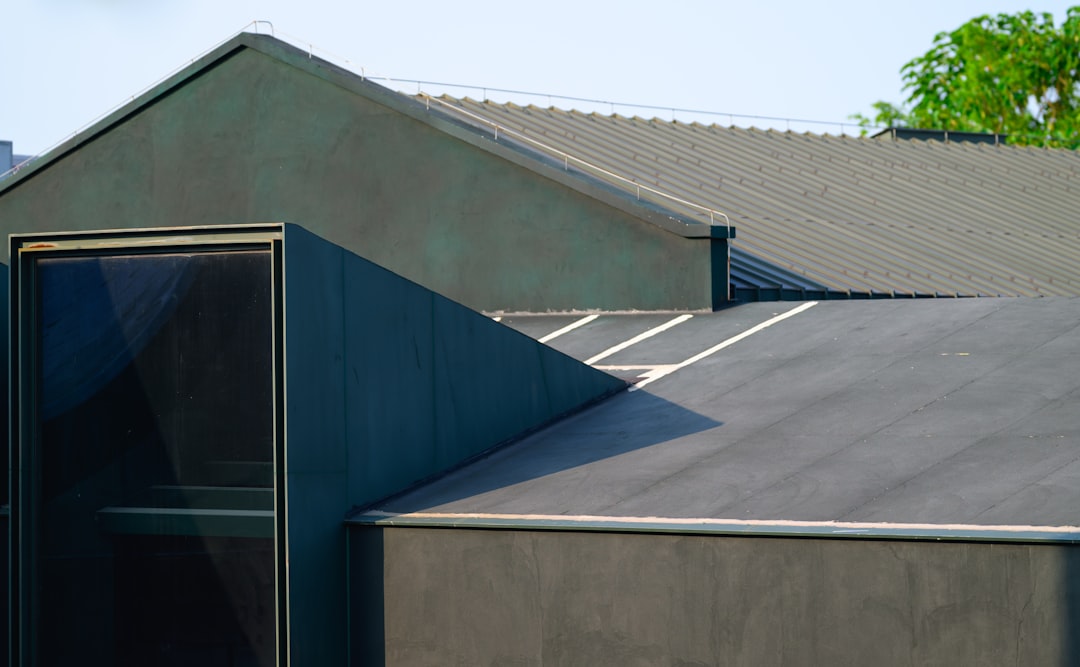

Engage prospects with a scan and streamline customer engagement with FREE QR code marketing tools by Sona – no strings attached!
Create a Free QR CodeFree consultation

No commitment

Engage prospects with a scan and streamline customer engagement with FREE QR code marketing tools by Sona – no strings attached!
Create a Free QR CodeFree consultation

No commitment
Commercial roofing companies face persistent challenges in bringing in new business, nurturing long-term relationships, and staying ahead of shifting building codes and technologies. In a competitive field where project timelines are long and decisions involve multiple stakeholders, traditional print materials often dominate initial outreach, causing many valuable leads to drop off before engaging digitally. The disconnect between offline interactions, such as a flyer left with a property manager or a sign on a completed project, and actual sales conversations can result in missed opportunities and limited visibility into genuine buyer interest.
QR codes are emerging as an effective bridge for commercial roofing contractors, transforming analog moments into actionable digital touchpoints. Where once a business card or brochure sat passively in an office, QR codes now allow buyers to schedule site assessments, review real-time project updates, or submit service requests with a quick scan, removing hurdles like manual lookups and data entry while inviting instant engagement without the need for a separate app.
This guide explores how QR code technology addresses pain points in the commercial roofing sector, from capturing anonymous traffic to connecting field engagement with backend analytics. Learn key strategies, practical use cases, and lessons from industry leaders who use QR codes to track marketing ROI and ensure every physical asset and communication piece drives measurable business value and strengthens customer trust.

Commercial roofing professionals have long relied on tangible, printed materials, yet these channels create a barrier to immediate lead capture. Potential clients may show intent by collecting a flyer or noting a yard sign but never progress further, especially if contacting your team requires extra steps. This reliance on static processes often means prospective high-value clients go untracked, and follow-ups fall through the cracks.
QR codes eliminate these frictions by converting offline interest into instant digital action. For example, a scan on a jobsite banner can open a pre-filled quote request form; a scan on a warranty card can trigger a service ticket; a scan on a brochure can reveal a portfolio filtered by roof type and region. With the right platform, every scan can feed directly to your CRM, kick off automated follow-ups, and give sales leaders a real-time view of pipeline activity.
Some companies go further by syncing QR scans with digital ad audiences. When a facility manager scans a code on a compliance board, the scan can add them to a retargeting segment that serves maintenance plan offers. This turns every flyer, sign, or vehicle into a data-driven channel that fuels continued engagement. Start creating QR codes for free.
Long sales cycles and infrequent, high-value projects raise the cost of lost leads. Many interactions that signal real interest are offline: a facilities director who pauses at your jobsite banner, a general contractor who picks up your brochure, or a property manager who tours a completed project. Without an easy action step on the spot, that interest often goes unrecorded and unaddressed.
QR codes solve this by reducing friction and making every surface a gateway to action. They also let marketing and sales teams collaborate around the same data. Instead of guessing which signs, events, or brochures are working, teams can see scan volume, conversion rate, and deal influence by placement and time. See Sona’s offline attribution for strategy and measurement frameworks.
Technology now makes it possible for every offline interaction to generate actionable data. QR codes tighten the feedback loop between marketing, sales, and service teams by showing what works and what to improve across your entire commercial roofing journey.

Commercial roofing teams need to capture detailed information, provide accurate documentation, and enable quick service actions. QR codes support these needs through several useful formats that work across office and field environments.
The most effective formats for this vertical are those that speed up quoting, simplify follow-up, and centralize documentation. Dynamic QR codes are typically best for campaigns and signage because they allow edits and measurement, while static codes are well suited for permanent resources that rarely change.
With Sona QR, teams can generate, brand, and manage all of these formats from one dashboard. Dynamic codes can be updated as campaigns evolve, while static codes keep permanent resources simple and reliable.

Many commercial roofing marketers struggle to understand which physical assets are driving meaningful pipeline. Yard signs, vehicle wraps, brochures, and conference handouts all look good, yet without clear data it is hard to decide where to invest more.
QR codes create measurement where none existed before. By placing unique codes on each asset and routing scans to purpose-built destinations, you can see which placements generate qualified leads and which need refinement. You can then shift budget to high performers and orchestrate follow-ups that match buyer intent.
Strategic QR deployment not only surfaces growth opportunities but also builds a continuous learning loop. As you collect scan and conversion data, you will refine creative, CTAs, and placement to lift performance quarter after quarter.

Commercial roofers confront two recurring problems: low conversion from printed outreach and slow onboarding due to manual steps. QR codes turn passive materials into active touchpoints that trigger the right next action. They also shorten the time between first interest and meaningful conversation.
Consider pairing each use case with a destination and a measurable outcome. When you link scans to inspection bookings, documentation access, or review requests, you can calculate the impact of every code, then scale what works.
By designing use cases around actual buyer and operator tasks, you ensure that each scan unlocks a valuable action. Over time, these scans create a data-rich picture of your market and your operations, improving both revenue and customer experience.
Each QR scan is a high-intent signal. A scan on a jobsite banner during business hours likely represents a facilities professional near a project site. A scan on a warranty card suggests a current customer who may need maintenance or expansion. By distributing unique codes across the buyer journey, you can automatically segment audiences and tailor follow-up.
Commercial roofing has distinct decision-maker types: property managers, facilities directors, general contractors, and owners. Use category-specific codes and destinations to identify who is scanning, then feed those segments into your CRM and ad platforms for precise retargeting.
With a segmented approach, you can retarget based on observed behavior rather than guesswork. This increases relevance, reduces waste, and accelerates qualified opportunities into your pipeline.
Disconnected communications between field teams, marketing, and the back office can lead to missed handoffs and wasted spend. QR codes unify your offline and online efforts by making each printed or physical asset actionable and measurable.
A connected strategy routes every scan to the next best step. That might mean booking an inspection, watching a drone video of a similar project, or downloading a compliance checklist for a specific roof system. When these actions are tracked and synced to your CRM, your team can follow up promptly with context.
QR codes act as the offline onramp to your digital engine. Centralized management with a platform like Sona QR makes it easy to monitor performance across channels and ensure that scan data flows into your CRM and ad platforms for continuous optimization.
Launching a QR campaign in commercial roofing is straightforward when you follow a clear plan. The goal is to replace slow, analog steps with fast, trackable actions that map to business outcomes like inspection bookings, RFP participation, and maintenance contract renewals.
Start with one or two high-impact placements, prove the results, then scale. As you gather scan and conversion data, iterate on design, CTA, and destinations to lift performance over time.
Identify the friction you want to remove and define a measurable objective. For example, if trade show leads stall after the event, build a QR-powered booth experience that routes scanners to appointment booking and gated case studies. If maintenance flyers convert poorly, use a QR code that opens a short service request form with required fields for roof system, access constraints, and urgency.
Select the code format based on your need for flexibility and measurement. Static codes are useful for permanent documents that rarely change, while dynamic codes let you update destinations and collect analytics without reprinting.
Design with real-world conditions in mind. Jobsites have glare, dust, and variable lighting; vehicle wraps are scanned at a distance; and brochures are viewed under mixed lighting. Your design and CTA must stand out and scan flawlessly.
Roll out codes in a phased approach. Start with placements that see the most foot traffic or buyer attention, then expand based on performance. Consistency of design and CTA across channels improves recognition and trust.
Measurement turns QR experiments into sustained revenue drivers. Monitor scan volume, conversion rates, and follow-on actions to determine ROI by placement and message.
A disciplined rollout ensures you prove value quickly. Once your first codes are driving measurable bookings and documentation engagement, expand to additional use cases like warranty access, referral programs, and on-equipment guides.
Many roofing teams know their materials are in circulation but cannot see whether they influence real deals. Understanding which brochures, signs, and vehicles drive inquiries is essential to allocating budget and improving outcomes. QR analytics replace guesswork with facts.
Modern platforms capture rich metadata for every scan and connect it with your CRM, ad platforms, and financial systems. This gives you a full-funnel picture of how offline engagement becomes pipeline and revenue.
This end-to-end accountability enables smarter decisions. When you can tie specific jobsite signs or vehicle wraps to won contracts, you can scale the winners, fix weak spots, and defend budget with confidence.
Initial gains from QR adoption can plateau without ongoing management. Common pitfalls include generic destinations that do not match buyer intent, poor placement that limits scannability, and missing integrations that cause follow-up delays. The right practices keep momentum high and ROI growing.
Choose the tactics that fit your media mix and workflows. Focus on precise attribution, automation that makes scans actionable, and team education that builds trust in the process.
Creative deployments can multiply impact. For instance, place a referral QR code on job closeout documents that lets satisfied clients submit a new prospect and automatically notifies your sales team. Or add a QR code to rooftop placards that opens a maintenance checklist and a quick service request form.

Skepticism about new marketing tools is common in commercial roofing, especially when past investments failed to show clear ROI. The difference with QR codes is the tight tie between offline engagement and measurable outcomes. Contractors are seeing meaningful uplift when QR codes are aligned with buyer intent and deployed where decision makers actually engage. For more ideas, explore these roofing QR strategies.
The following examples illustrate how simple changes in placement and destination can deliver outsized results. While results vary by market, these patterns are repeatable across many commercial roofing contexts.
Use these ideas as starting points, then tailor to your unique market, services, and audience roles. The common thread is a clear CTA, a frictionless destination, and measurable follow-up.
Placing a code on a sign is easy. Designing a program that consistently yields qualified opportunities requires intentionality. Experienced teams plan for buyer context, operational realities, and ongoing optimization to avoid the most frequent mistakes.
Two themes underpin success: match destinations to intent, and ensure scannability in the environments where your audience interacts with the code. When in doubt, test placements with real users and iterate quickly.
By embedding QR workflows into both marketing and operations, roofing firms are lifting satisfaction scores and growing renewals. The approach replaces manual, error-prone steps with measurable, automated journeys that buyers prefer and teams can scale.
By embedding QR codes throughout the commercial roofing workflow, companies are turning every truck, site, and document into a digital access point, closing the loop between first interaction and final sale. This empowers teams to capture intent at the moment it happens, automate smart follow-ups, and build lasting client relationships. With unified analytics and seamless offline-to-online conversion, today’s roofing leaders are setting new standards for responsiveness, data-driven growth, and customer-centric service.
QR codes have revolutionized commercial roofing companies, transforming traditional access management into seamless, efficient, and secure operations. Beyond simplifying site entry, they enable better communication with clients, streamline inspections, and enhance project transparency—turning everyday interactions into valuable data points that drive smarter decision-making. Imagine instantly granting authorized personnel access while tracking every scan to improve safety and accountability.
With Sona QR, commercial roofing companies can create dynamic, trackable QR codes in seconds, update access credentials without reprinting, and connect each scan directly to operational insights. This means no more manual logs or lost passes—just hassle-free access control that supports both field teams and client satisfaction.
Start for free with Sona QR today and empower your roofing projects with smarter, safer, and more connected access management.
Commercial roofing companies struggle with long sales cycles, multi-stakeholder decisions, and a disconnect between offline outreach and digital engagement, which often causes valuable leads to drop off before contact.
QR codes convert offline interest into instant digital actions by enabling prospects to schedule assessments, submit requests, and access project updates quickly, reducing friction and capturing leads that might otherwise be lost.
Common QR code formats include web links to landing pages, forms for service requests and bookings, vCards for contact sharing, Wi-Fi access codes, and app download links to support marketing and operational needs.
Effective placements include jobsite entrances, compliance boards, trade show booths, branded vehicles, brochures, direct mail, outdoor ads, and conference materials to capture buyer interest and track engagement.
QR codes provide scan-level attribution with data on location, time, and asset, enabling companies to track scan-to-lead conversion rates, pipeline activity, and ROI by integrating scan data into CRM and marketing platforms.
They should define a clear business goal, select appropriate QR code types, design and test codes for real-world conditions, deploy across high-impact channels, train staff, and continuously track and optimize performance.
By placing QR codes on closeout packets and signage that link to review pages or feedback surveys, companies can gather testimonials, improve ratings, and gain insights for continuous improvement.
Designs should include branding, clear calls to action, high contrast for visibility, and be tested for scannability in various environments like outdoor sites and vehicles to ensure ease of use.
By assigning unique QR codes by buyer role, journey stage, location, and action, companies can segment audiences automatically and sync this data to CRM and ad platforms for precise, behavior-driven retargeting.
Avoid generic destinations that do not match buyer intent, poor placement that reduces scannability, lack of integration with CRM, and failure to maintain or refresh codes regularly to ensure ongoing engagement.
QR codes transform physical materials like flyers, signs, and vehicles into actionable digital touchpoints that feed data into CRM systems, enabling real-time tracking, automated follow-ups, and improved sales pipeline visibility.
Services include site inspections, quote requests, maintenance scheduling, warranty registration, compliance documentation access, and client portal app downloads, all accessible through QR code scans.
They can integrate QR codes across multi-channel marketing assets, use targeted campaigns with dynamic codes, collect measurable data for optimization, educate staff to promote scanning benefits, and leverage user-generated content.
The article does not specify the average cost of commercial roofing services.
While the article focuses on marketing and QR code strategies, choosing a reliable commercial roofing company involves looking for firms that use modern technology like QR codes to ensure responsive service, trackable communication, and strong customer trust.
The article does not list specific companies but suggests that using QR-enabled marketing and digital tools can help identify and engage reputable commercial roofing companies.
Use Sona QR's trackable codes to improve customer acquisition and engagement today.
Create Your FREE Trackable QR Code in SecondsJoin results-focused teams combining Sona Platform automation with advanced Google Ads strategies to scale lead generation

Connect your existing CRM

Free Account Enrichment

No setup fees
No commitment required

Free consultation

Get a custom Google Ads roadmap for your business






Launch campaigns that generate qualified leads in 30 days or less.
